The Samsung Galaxy S20+, S20 Ultra Exynos & Snapdragon Review: Megalomania Devices
by Andrei Frumusanu on April 3, 2020 9:30 AM ESTThe Exynos 990 SoC: Last of Custom CPUs
While we've received a lot of information on the Snapdragon 865 over the last few months due to Qualcomm’s openness and willingness to share details with the public, until now we’ve known almost nothing about the new Exynos 990. Samsung LSI’s newest flagship processors was announced way back in October, but we had to be patient and await commercial devices before we could get any concrete details on the chip’s makings. What we do know is that the new chip employs a new generation M5 CPU microarchitecture, upgrades the mid-cores to Cortex-A76 designs, and employs a new Mali-G77 GPU, all manufactured on a 7nm 7LPP process that uses EUV lithography.
An Exynos 9820 Retrospective
Before we get into the Exynos 990 itself, I want to do a quick retrospective on last's year's flagship Samsung SoC, the Exynos 9820, both to catch up on things we've learned since the Galaxy S10 launch, and to illustrate how the Exynos 990 has changed things.
The first thing to note on the Exynos 9820 is that Samsung’s custom CPU cores reside in a completely different cluster than Arm’s cores – both being interconnected and being cache coherent only via Samsung’s Coherent Interconnect. My more recently written core-to-core latency test demonstrates this topology difference as the latencies between CPUs on the different cores is significantly higher than what we see on the cores within the Arm cluster, and higher than what we saw on the Snapdragon 865 on the previous page.
The second correction is that the M4 cores didn’t just have 512KB L2 caches, but rather 1MB. This wasn’t very visible in the latency tests due to issues with the microarchitecture which we’ll revisit in a later page as well.
The weird cache behavior that we originally reported on in the bandwidth figures of the A75 cores last year ended up being a side-effect of a 2MB last-level cache on the SoC. This SLC acts the same as the 3MB SLC on the Snapdragon 865 and allows for efficient caching of various memory accesses of the SoC IP blocks, saving power for the system.
Enter the Exynos 990
Where the Exynos 990 differs from the Exynos 9820 is in a few areas. First off, let’s focus on the Arm cluster. Here Samsung has finally donned the small A55 cores with private, 64KB L2 caches. This was notoriously missing from both the Exynos 9810 and Exynos 9820’s A55 cores, which lead them to be less performant and seemingly less efficient than their counterparts on the Snapdragon SoCs. The 64KB L2 caches here are still only half of the 128KB that we find on the Snapdragon 865, so Samsung continues to be extremely conservative in the cache configuration of the Arm CPUs. The new small cores see a slight clock frequency upgrade, going up to 2GHz this time around.
The middle cores see an upgrade from Arm Cortex-A75s to Cortex-A76s, while also getting a frequency lift from 2.3GHz up to 2.5GHz. This is actually a massive performance boost of 38% to 50% depending on the workload, and essentially serve as the Exynos 990’s workhorses for the vast majority of tasks. The L2 caches are still configured at 256KB per core, and the shared L3 of the Arm cluster remains at a more conservative 1MB.
On the big core side, we see the evolution of the microarchitecture from the M4 cores, codenamed Cheetah, to the newer M5 cores, codenamed Lion. Whilst Samsung has kept the maximum clock frequencies unchanged at 2.73GHz, they did promise a 20% uplift, which should mostly come from IPC improvements.
The biggest externally observable change is the fact that these new cores no longer have private L2 caches for themselves, but rather now come with a shared L2 of 2MB. That’s actually quite the huge microarchitectural design change in an era where we’re used designs actually introducing private L2 caches. The topology change can be evidenced by the drastic reduction in the core-to-core latencies between the two M5 cores compared to the M4 counterparts in the previous generation, as the coherency now happens at a lower cache level that's closer to the CPUs.
The Exynos 990 is manufactured on Samsung’s 7LPP node, which uses EUV lithography. It’s actually not the first chip on the process, as that title goes to the Exynos 9825 found in the Note10 series last year. However if TechInsight’s reporting is accurate, it seems that the that the Exynos 990 is the first chip to be actually designed with the full 7LPP PDK rather than being just a relaxed conversion of the design to another process (The 9825 is functionally identical to the 9820, and it seems this also applies to its lithography implementation).
Samsung describes the 7LPP process as having 7% higher performance than its 8LPP node, which should also manifest itself as a power reduction of a design at otherwise equal frequency. Comparing the voltage curves of one of our S20 Exynos 990 units to the S10 unit last year, we see that there are some differences, but these are somewhat lackluster in the end. First of all it’s to be noted that the bins of our Exynos 990 units are seemingly bad this year, and I’ve seen that most units out there are in the same classification or even worse, pointing to the possibility of bad yields for the chip.
The A55 cores do clock slightly higher this generation, but at the peak frequencies the voltages still remain very high. At more medium frequencies we do however see improvements of up to around -43mV. The A76 cores can’t really be compared to the A75 cores of the previous generation due to their different microarchitectures, but also here we see the voltage curves being lower than on the 9820 even though the binning of our 990 units here are quite worse.
Finally, the M5’s core voltages are extremely disappointing. Not only are there no improvements at equal frequency to the M4 cores on 8nm, but there’s actually a degradation in the frequency scaling: the new Lion cores require higher voltages to reach the same frequencies. Peak voltages at 2.73GHz have gone up from 1068mV to 1118mV in our review sample units between the M4 and M5, meaning the new microarchitecture just scales worse in frequency. This all doesn’t bode all to well for power efficiency of the new design.
Samsung’s own scheduler and CPU characterization is very clear on the power and efficiency curves: throughout its performance scaling, the M5 cores are notably less efficient than the Cortex-A76 cores on the same SoC. We also note that the A55 data this year seemingly looks more realistic than what we’ve encountered on the Exynos 9820’s drivers last year.
The most striking differences in the power data from Samsung is the static leakage characteristics of the A76 and M5 cores. At an equal 1050mV voltage (2.5GHz on the A76, 2.6GHz on the M5), the Arm cores are characterized as leaking 78mW statically while the M5 cores use up 297mW. Static leakage is roughly corresponding to die area of the block – last year’s M4 cores were 3.72x larger than the A75 cores, and the static leakage difference here on the Exynos 990 is 3.8x, and I wouldn’t be surprised if this also ends up being the difference in area between the two CPU types.
One odd mechanism that Samsung had introduced in the Exynos 9820 was a more complex scheduler that differentiated power models based on the running ISA of the application. It tracked 32 and 64-bit apps separately and made scheduler decisions based on the microarchitectural performance and power characteristics of the different CPUs on the different execution modes.
This is said to help power efficiency, mostly by scheduling things more often onto the Arm middle cores which seemingly have a better 32-bit execution efficiency.
I was curious and I tried this out on the Exynos 990, comparing the relative differences in performance and efficiency between the M5 cores and the A76 cores. In the aggregate figures of SPECint2006, I unfortunately didn’t see any big difference at all in the execution modes. However individual subtests such as 456.hmmer, which are mostly execution bound, saw large advantages on the A76 cores, actually outperforming the M5 cores with a score of 13.53 vs 12.83 while using only half the energy. So in that regard, Samsung’s scheduling methodology makes a lot of sense. 400.perbench was another case of the A76 cores outperforming the M5 cores in 32-bit mode, using less than half the power. However, any more memory intensive workloads heavily favored the M5 cores, probably due to the stark differences in cache sizes. While I’m sure Samsung’s ISA based scheduling model reduces power, I do have to wonder what the absolute performance impact is in terms of using this mechanism.
Also unrelated to the whole ISA scheduling mechanism, I think this is the first time we’ve ever published benchmark numbers on the differences between AArch32 and AArch64 execution modes. The AArch64 performs significantly better due to it having more architectural registers available and being able to execute out-of-order code more efficiently, along with some ISA instruction improvements. Whilst there’s a power increase in this mode, we’re seeing much better efficiency as the performance improvements are greater. It’s also a good reason as to why the wider ecosystem is shifting to deprecate 32-bit on Arm.
It’s also to be noted that the M5 Lion core will be Samsung’s last commercial custom CPU design, as the design team had been disbanded back in October, and most employees by now have found new homes at different companies. I’ll be coming back to this decision in the context of the wider competitive landscape after we dissect the M5’s performance and efficiency.


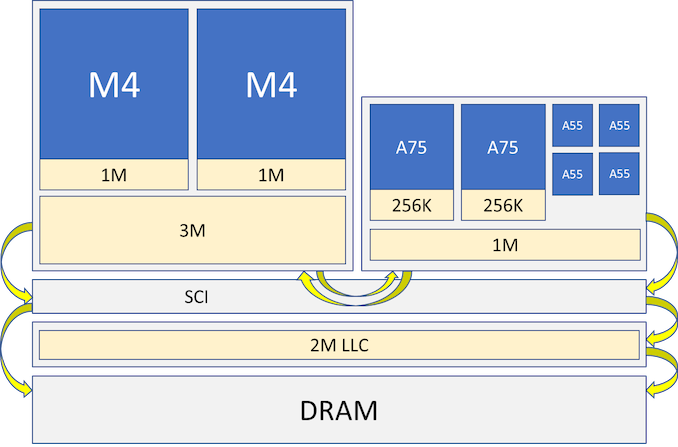
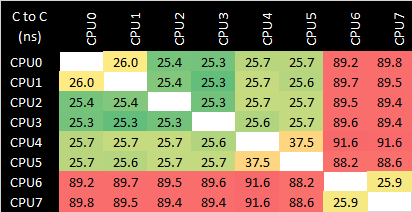
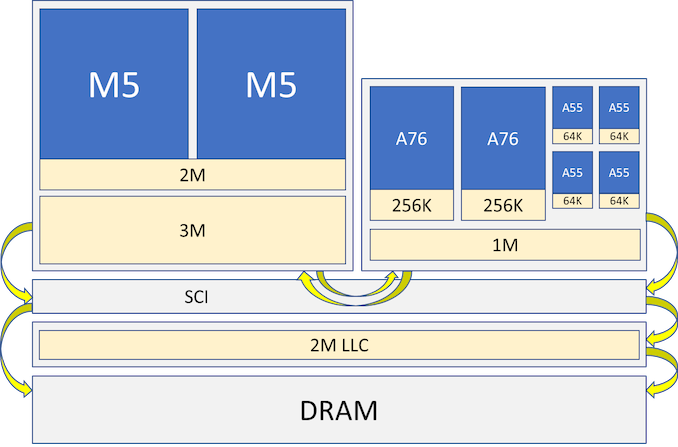
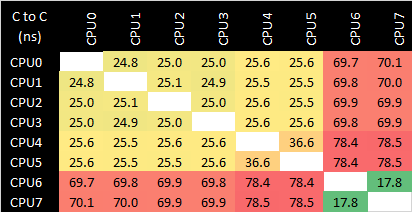
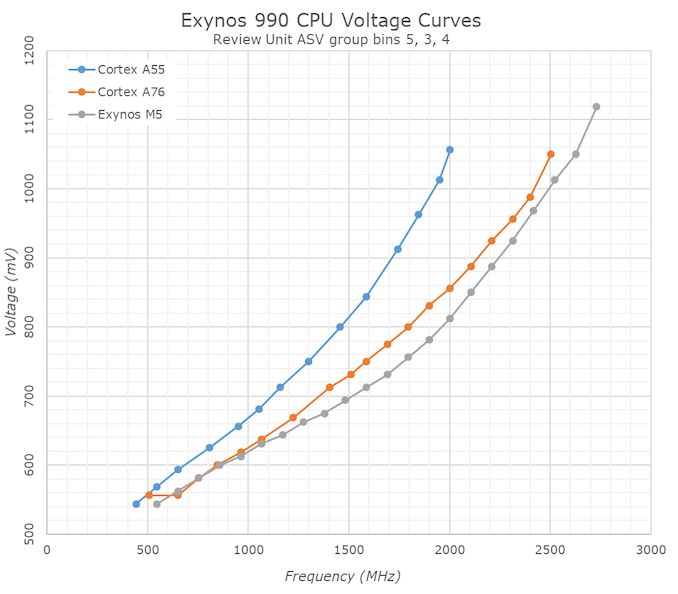
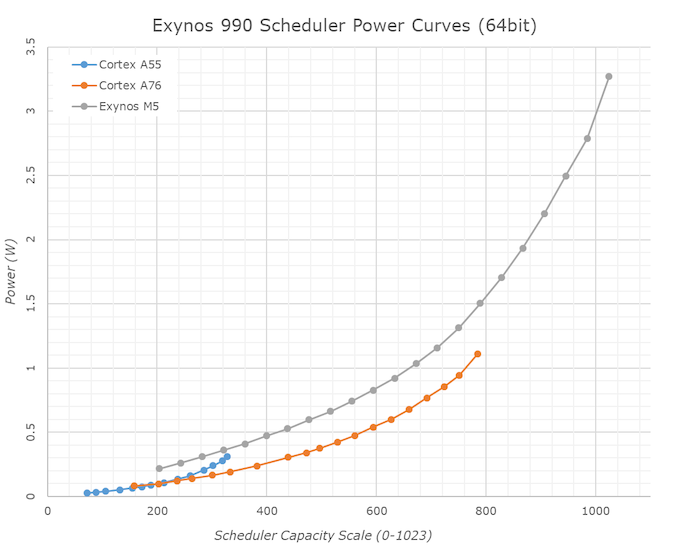
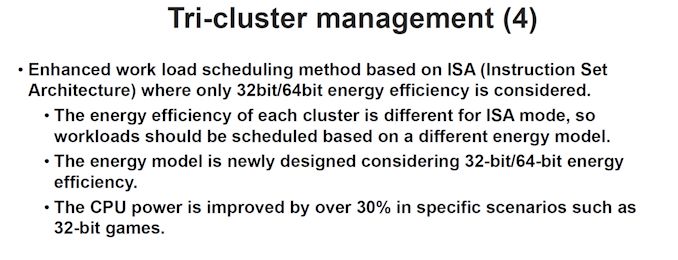
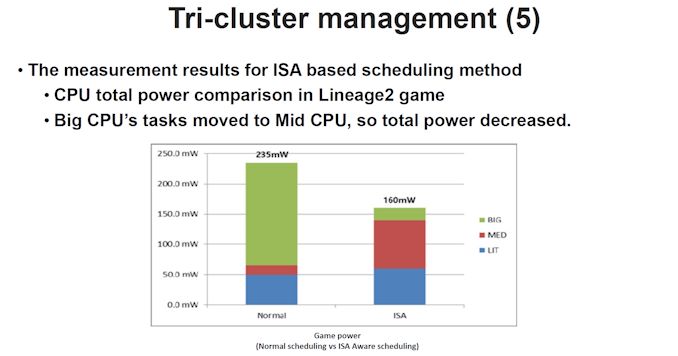









137 Comments
View All Comments
crimson117 - Friday, April 3, 2020 - link
$1400 is absurd. There's no way they're worth more than twice as much as a brand new S10.Andrei Frumusanu - Friday, April 3, 2020 - link
Probably one of the reasons Samsung still continues to sell the S10 series. They're really excellent value right now, and you're not missing out on too much.cha0z_ - Monday, April 6, 2020 - link
You are literally getting just one more year of software support going for s10 series... samsung software support policy is abysmal with less than two years of real support and from there just security. I got both iphone 11 pro max and exynos note 9, if I put aside the cr*ppy 9810 - it will not receive even the oneUI 2.1 as an update, while samsung will soon release it for s10 line. Enough said, note 9 is year and a half old.How can you recommend someone 1000 euro or 1400 euro phone if it will be supported for 1.5 years and from there 1.5 more security updates next to apple with 5 years FULL support with major, minor, day one, betas + security update for old iphones like 4s and 5 (2011 and 2012 respectably)?
goatfajitas - Monday, April 6, 2020 - link
You do realize the phone doesn't stop working when it doesn't get an OS update right? TBH, neither Android or IOS has added a whole lot in the past few years, its just a yearly cadence of very minor updates and not getting them means almost zero in actual use.Featherinmycap - Monday, April 6, 2020 - link
I think there have been a lot of added features to IOS in the last 3 years that I use a great deal. Not saying that Android didnt already have some of these features, but for IOS users we got with IOS 11; a file manager (finally), Messages sync with iCloud, screen recording, useful improvements to Siri and ApplePay. IOS12; lots of performance improvements (lots), Screentime, Shortcuts (scripting), CarPlay, Animoji Memoji, Tracking prevention, IOS13; Single Sign on, external storage, Dark Mode, better support for keyboards, trackpads/mice, etc.Famorcan007 - Tuesday, April 7, 2020 - link
I think it's because Android mostly has offered those features(file manager,screen recording, external storage,support for mice etc.) since way back compared to iOS' slow but steady trickle of features that's why iOS users feel every OS update is huge and significant. I'm using a Note 4(my backup device) right now to comment which doesn't feel too crippled compared to my Android 9 P20 pro.cha0z_ - Tuesday, April 7, 2020 - link
Let's not find an excuse - software support is software support. Security is security - some of us keep all their personal info on their device (most of us) + bank accounts and whatnot, risking compromise on your phone is not that innocent compared to what was like back in the days. IOS adds rapidly more features for sure compared to android that recently starts to look more and more like IOS (and I personally totally don't like that), but still added some good stuff under the hood and some new features.It's not serious to sell 1400 euro phone that is supported for one year and a half. I own exynos note 9 - it's 1.5 years old and already samsung dropped the support, s10 line received oneUI 2.1, note 9 will not. How is that for my 1000 euro phone + double served with that cr*ppy exynos 9810 in it. Now it's in my GF and I am rolling iphone 11 pro max. I prefer android and love oneUI, but I am tired to be a second hand customer.
s.yu - Tuesday, April 7, 2020 - link
Don't know what you're talking about. My Note8 just got another update days ago, one that I preferred not to have because each update comes with a risk of bricking the device while potential changes to the UI are not always welcome either. I also got it ~30% off retail a few months after release, such has always been the state of Samsung, at least for S and Note.I'm no longer buying Samsung but the main reason is lack of the 3.5mm port, if I have to name another then it's between the questionable choice of telephoto in the smaller variants or the oversized device with a mediocre battery(I regard 5000mah to be mediocre for the size). I still do like the UI but I'm willing to look around.
Psyside - Tuesday, April 7, 2020 - link
"It's not serious to sell 1400 euro phone that is supported for one year and a half. I own exynos note 9 - it's 1.5 years old and already samsung dropped the support, s10 line received oneUI 2.1, note 9 will not. How is that for my 1000 euro phone"Very easy, with those "very old software features" Samsung can do what MAC can't, and don't get me start it on the utter crap IOS.
Also don't spin it, Samsung offer 4 (four) years of security updates, so do your research before you type something.
cha0z_ - Wednesday, April 8, 2020 - link
fanboy. Security update hahahahah iphone 4s and 5 still receives security updates - 9 years old phone for 4s. What you will say now?iphone receive FULL support with MAJOR ios versions, updates, minor updates, BETA versions, DAY ONE as their newest and most expensive phone - for 5-6 years and you are talking about 4 years of security updates roflmao. Samsung released note 9 with android 8 when android 9 was already released from more than a months. Oooo, it's enough time, because you can dev your skin and features on top of the dev previews, especially the later ones that are closer to final (for the more tricky/deeply integrated code) - so no excuse for what they did. Basically they gave me one major update - android 10 as android 9 should had been on the note 9 from the start. Even if we count 2, how is that next to 5-6 versions of ios?
And before you talk some more fanboy bs that never used recent years iphones - ios brings a lot more in every new versions (adding features that was missing for no reason, like external USB flash support, file browser for the files on the phone, etc) while android 10 brings you what? More lockdown ios style, iphones gestures and pixel device that is a cheap iphone wannabe.
Because of people like you samsung don't want to change their software support policy. Why should they? It costs money or now you will start with the argument how the phone hardware is not supporting oneUI 2.1 (for the note 9 that is 1.5 years old, but will not receive it most likely ;) ). Or maybe android 11 will be too much for the phone, right? :D
Also I agree - my note 9 can do more than my iphone 11 pro max, but everything that the phones do both (and that's 99.9% of what you will end up using constantly) - the iphone 11 pro max makes the exynos note 9 look like a total utter joke - faster, smoother with NOT A SINGLE frame drop no matter what you do, gaming is insanely good with surprise - NOT A SINGLE frame drop, battery life is x3 times better, apps have MORE features and runs super smooth and great, speakers destroys the note 9 one, camera too is times better, materials are a lot better too, faceid is super good and fast - feels like I don't have any security on - never failed or gave me any issue. Fun fact, note 9 came with fortnite and recommended as gaming phone for that game. My exynos variant can't run smoothly the game even with 30fps cap medium settings and !1080p! while iphone XS max runs it 60fps high 2688x1242 without a single frame drop. Same goes for the 11 pro max, obviously.
As for ios - it improves massively and adds more and more missing features/drops restrictions with every version. ios 14 is already known to drop more. I prefer android, because I can do more + I love oneUI, but that doesn't change the fact that in my country I will receive exynos and 1.5 years of decent support. And in the end of the day - I spend my time in apps, not in the settings menu and apps on ios are better, with more features, smoother, a lot of them exclusive to the platform. Can you play dead cells on your android device? No? Yeah, the port is expected around the end of the year, I have it from June 2019. Full blown civilization 6 on your android device? Yeah, will never come, I have it and it's 1:1 port that runs great. Can go on and on and on. If you spend your time tweaking settings, options, UI - good for you, I spend my time in games and apps.